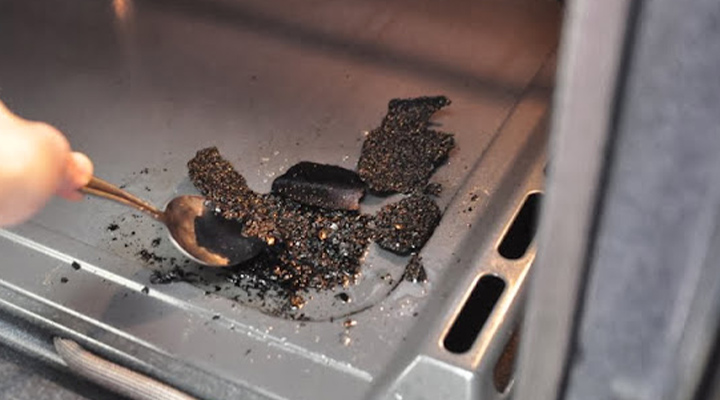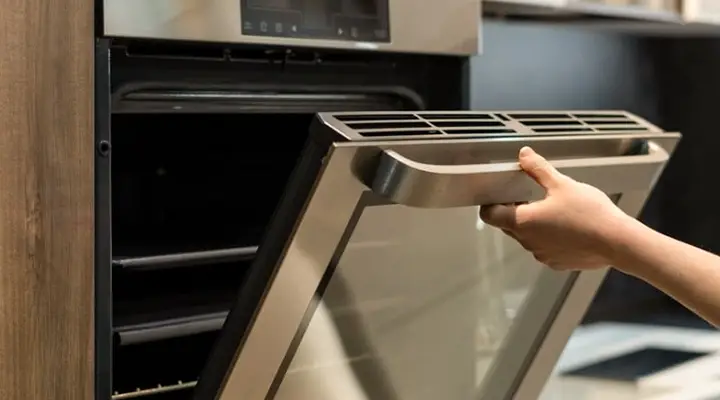How to Measure Cubic Feet of Microwave? [ANSWERED]
Whenever you think about must-have household items, you actually can’t avoid counting a microwave in the first place. It has become a pretty vital part of the modern American kitchen. But why so? The simple and primary reasons are it won’t let the leftover food get wasted and will cook most basic food items for you.
And when you’re about to cook, the size does matter. It’s a fact that the more the microwave size, the more efficient it is. This is because larger microwaves typically offer higher wattage which actually helps to cook or heat food faster and evenly. And cubic feet is the unit to measure the internal compartment of the microwave.
Therefore, in this post, we’re going to provide the formula for measuring cubic feet of a microwave. So, stick to the post till the end.

The Formula for Measuring the Cubic Feet of Microwave
When you think about cooking food in a microwave, the consideration that first comes to your mind is how much food you need to cook. And then regarding this, another consideration takes place which is the amount of food you can place in the oven at once. That’s why you should get a microwave that completely meets your cooking preferences where the compartment size is included.
The compartment measurements are mainly stated in cubic feet in terms of microwaves. Here’s the formula for determining cubic feet –
Microwave cubic feet = (interior height x interior length x interior width) / 1728
In other words, you need to multiply the microwave compartment’s interior height by the length by the width and after that, divide the multiplication result by 1728 to get the cubic feet of the microwave. To make it more convenient, here’s an example –
If a microwave has a height of 14 inches, length of 20 inches, and width of 16 inches; then its cubic feet will be 2.6 cubic feet.
It was just an example. In general, microwaves vary from 0.5 cubic feet to 2.2 cubic feet. The average measure is considered between 1.4 cubic feet and 1.8 cubic feet and there are some manufacturers who may able to build a customized microwave for you with greater cubic feet.
Important
In terms of internal capacity, conventional microwaves come in four different size categories, so that people can choose microwaves according to their preferences. Microwaves under 1 cubic foot are considered compact ones, whereas mid-size microwaves come in a size between 1 cubic foot to 1.5 cubic feet. The full-size microwaves range from 1.6 cubic feet to 2 cubic feet. And microwaves over 2 cubic feet are counted as extra-large size.
Are there any benefits to having a microwave with a larger cubic feet measurement?
Yes, there are several benefits to having a larger microwave with a higher cubic feet measurement. Larger microwaves typically offer higher wattage, which means they can cook or heat food faster and more evenly. They are also versatile and can accommodate larger dishes or containers. This can be especially useful when reheating family-sized portions or preparing large meals. Keep in mind that while larger microwaves have their advantages, they may take up more counter space, so it’s essential to consider your kitchen’s layout and your specific cooking needs when choosing a microwave size.
Can I use the cubic feet measurement to determine the power or wattage of a microwave?
No, the cubic feet measurement of a microwave does not indicate its power or wattage. The cubic feet measurement is solely a measure of the interior compartment size, which can help you understand its capacity. To find out the power or wattage of a microwave, you’ll typically need to check the manufacturer’s specifications or the label on the microwave itself.
Conclusion
That’s all about measuring cubic feet, or in other words, the internal compartment of a microwave. As you can see, the formula is pretty simple to memorize, and by using it, you can measure cubic feet of any microwave regardless of type. So, we hope that you’ll find this post useful. If so, share your valuable feedback with us to keep supporting. Also, mention if you have further questions.

![[ANSWERED] Why Does An Empty Plate Not Heat Up In The Microwave?](https://www.dominatekitchen.com/wp-content/uploads/2023/08/why-does-an-empty-plate-not-heat-up-in-the-microwave.webp)




![Can You Put a Microwave on a Metal Shelf? [EXPLAINED]](https://www.dominatekitchen.com/wp-content/uploads/2023/09/Can-You-Put-a-Microwave-on-a-Metal-Shelf.webp)